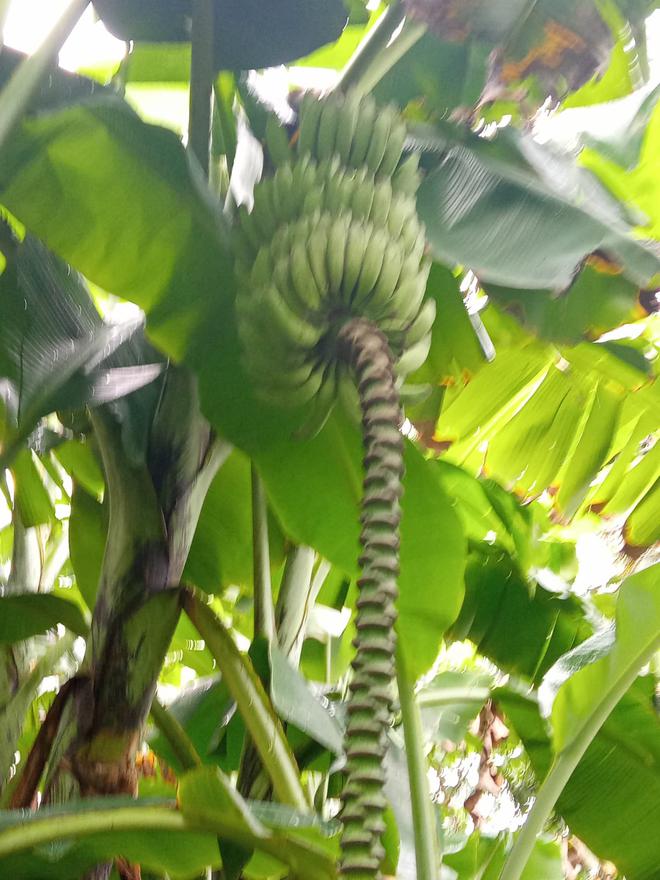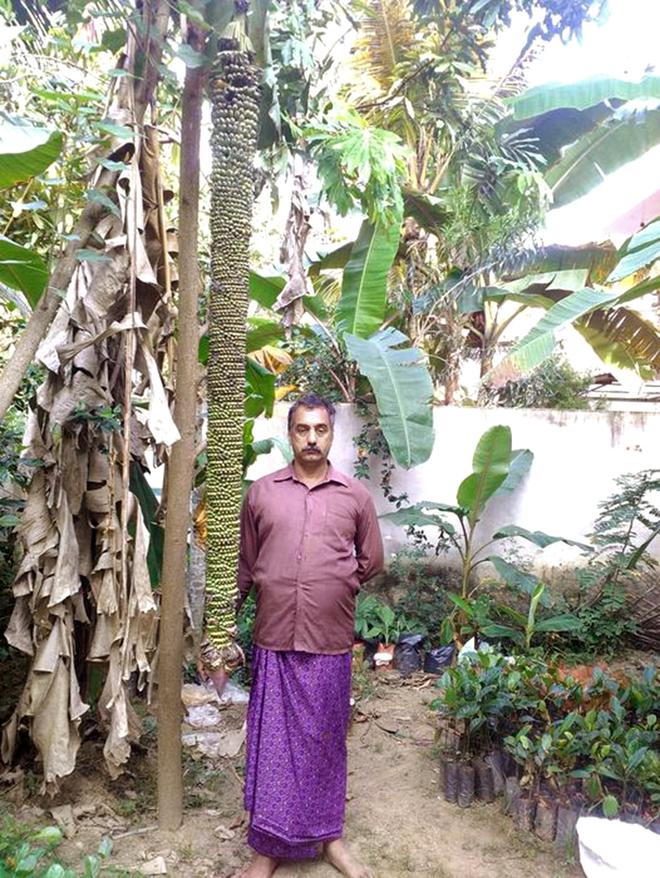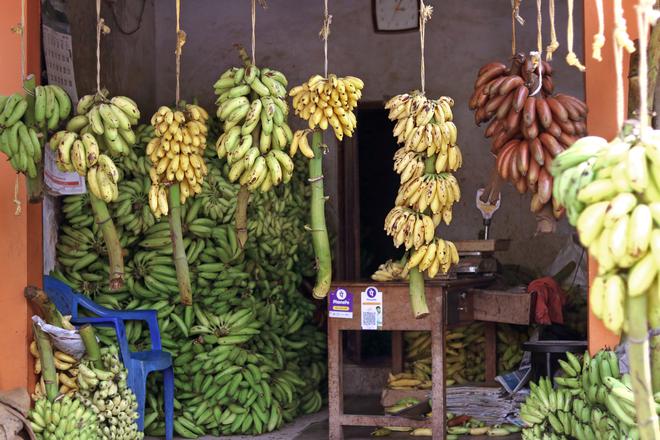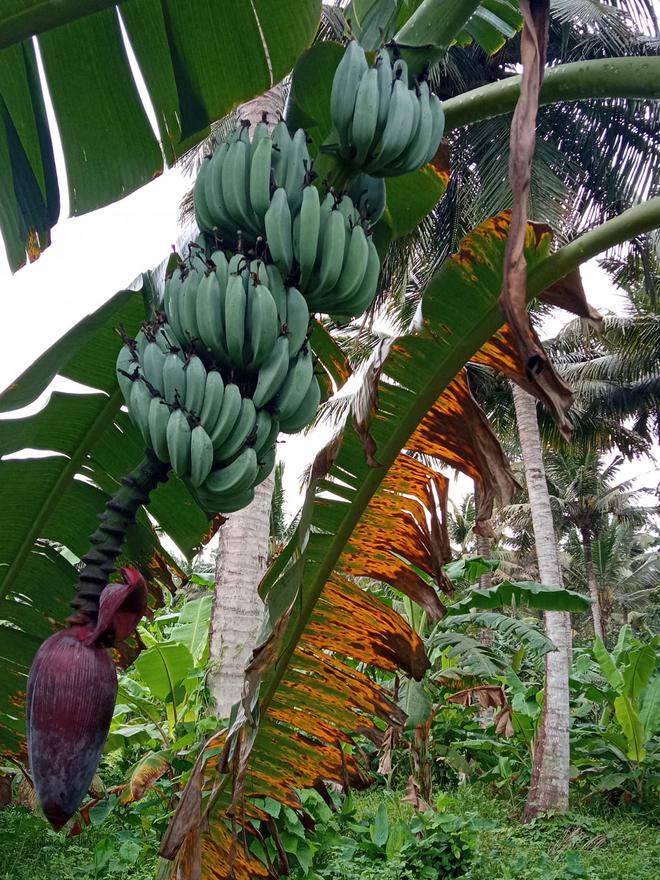Vazha Chettan, aka, Vinod Sahadevan Nair, is an angry man. As he tramps through slushy fields lush with different kinds of plantain, the names of bananas he cultivates roll off his tongue — Matti, Pisang Jaribuyam, Ayiramka Poovan, Pidimonthan, Gothiya, Jahanji, Ney vazha, Lambi, Lady finger, Beeji kela, Blue Java… Vinod’s farm in rural Parassala, nearly 35 km from Thiruvananthapuram, is a star among banana farmers in India for having 400-plus kinds of banana, which Vinod has painstakingly collected from all over India and abroad.
The Cavendish, currently the world’s most popular banana, however, does not have priority in his list. Even while agri-scientists worry if the Cavendish will go the way of the Michel Gros, which fell out of favour when large tracts of Miche Gros banana fields died due to a fungal attack in the fifties, Vinod is more concerned about the diminishing diversity of native varieties in India, especially in Kerala.

“Several varieties of native bananas of Kerala that were easily available no longer exist or are in danger of becoming extinct. Matti used to be the banana of Thiruvananthapuram. It was the choice of the royals of erstwhile Travancore and tax-free land was allotted to cultivate the Matti. Now, it is difficult to find even a bunch. Most of what is available come from Tamil Nadu,” he says.
He continues: “In Kerala, the peyanka is widely used for cooking. Fifty or even 25 years ago, it was common to see this in almost every backyard. It is still much in demand but we depend on Tamil Nadu to supply us with this cooking staple.”

Exasperated by bureaucrats and farmers, who he feels are not doing enough to conserve native bananas, he is preserving as many as he can on his farm. The physics graduate, who has a green thumb, decided to turn into a full-time farmer, after his mother’s demise when he gave up his job and chose to reside in Parassala.
He is in his element once he is trudging through his fields. Some of the plantain tower over us, with leaves like broad elephant ears that sway in the wind, some are dwarf varieties, bearing fruit that can be plucked by a child. But for the height of the plants and the bunches borne in some of them, every other plantain looks the same to my untrained eye. However, Vinod identifies each like a fond parent with a large family.
What’s in a name?
Patting the broad leaf of one, he says, “This one is Bhim Kol from Assam, it is the tallest plantain in India. This one, with a bunch resembling the trunk of an elephant, is called Ayiramka Poovan. It bears nearly 1,000 bananas and has a lovely flavour. Now, this, from Bengal, is called Champa. This foreigner from Cuba is also called Cuba. Pisang raja is from the Philippines and the Lady finger, from Australia,” he explains, caressing the leaves of some, cutting the undergrowth around others and closely examining the bunch of fruits in a few.

Banana grows well in places with plenty of rainfall and enough sunlight, “which includes most of India, Africa, the Caribbean Islands, Southeast Asia and Latin America.”
The deep south of Kerala has always been a centre of banana cultivation. Eager to learn more about bananas, he approached an office of the Horticulture department. “Their indifferent attitude made me determined to learn all about bananas on my own. Research institutes and agriculture institutes from other States, especially the National Research Centre for Banana (NRCB), however, proved to be helpful,” he recalls.
When he lost Chingan, a native banana, his search for one helped him to stumble on many kinds of bananas that had become rare in Kerala. “I was able to find suckers of Muttapoovan, Karinkadali, Ottamungali and so on. Suckers are shoots of the banana that rises from the soil, usually near the parent plant.
The research unit of the agriculture college in Thrissur has suckers of different kinds but they told Vinod that those were not for sale. “That was how I began collecting bananas from India and abroad. I travelled extensively to all the banana-growing States such as Tamil Nadu, Karnataka, Maharashtra, West Bengal, Assam, Meghalaya, Tripura, Arunachal Pradesh, Manipur and so on. I got in touch with farmers and banana growers and they were most helpful.”

Vinod has set aside a portion of his farm for commercial farming of Nendran, which is used for making banana wafers and cooking. The rest is for the rare ones he collects. “I sell the suckers to those who are keen on growing bananas. More than that, I like exchanging suckers with collectors and farmers like me,” he says.
His son Abaneesh, an engineer, is keen on farming and is a hands-on farmer like his father.
“If it were not for bananas, I would not have travelled so much or even got so much attention from people in high places,” admits Vinod.
He has won a place in The Limca Book of Records for having the most number of varieties of bananas. He has also been honoured by the NRCB.
His dream is to set up a banana village as a tourist attraction and to show people the wide range of bananas that exist in the world. “If the government gives me a plot or if someone backs me, I am willing to do all the hard work,” he says with a smile.







